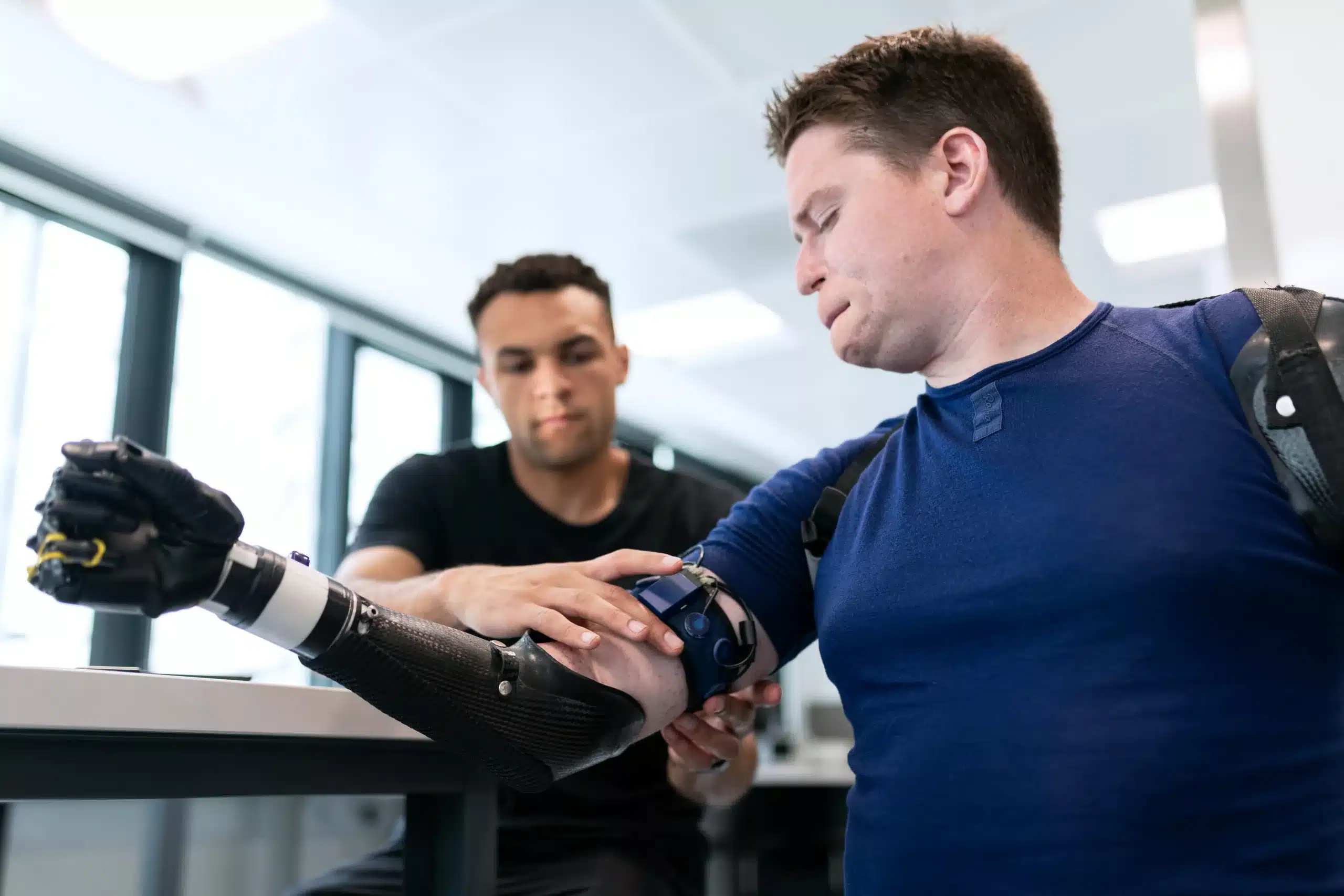Prosthetic Limbs are designed to help people who have had a limb amputated improve their mobility and range of motion. Prosthetic limbs support natural movement by mimicking the motion, and sometimes the appearance, of a real limb. However, it is important to bear in mind that types of prosthesis and level of injury vary from person to person, which means that some people may still require a walking stick or crutches whereas others can walk freely.
It may also be the case that it is not possible to have a prosthetic limb immediately after amputation, and according to the NHS it could be several months before you are fitted with one. If you have had an amputation to a lower limb, a wheelchair will be offered to help you get around in the meantime.
In most circumstances, the NHS generally supply only one type of prosthetic limb, whereas private providers may supply wet/dry and bespoke prosthetic limbs.
But… prosthetic Limbs are not suitable for everyone
Although prosthetic limbs are designed to help people who have had an amputation, according to the NHS they are not suitable for everyone. This is because when you have prosthetic limbs, it is a requirement that you undergo an extensive course of physiotherapy and rehabilitation.
There are also other circumstances outlined by the NHS which would deem some people unsuitable for prosthetic limbs. For example, the adjustment to using prosthetic limbs can take a considerable amount of energy due to the compensation of the loss of bone and muscle. Therefore, those that are frail or have a serious health condition, may not be suitable.
Other factors that should be considered prior to deciding the suitability for prosthetic limbs according to Johns Hopkins Medicine:
- The amount of soft tissue remaining following amputation
- If you are in pain
- The condition of the skin on your limb
- The range of motion the remaining has
- The health of your other limbs (particularly the other leg if you have had a lower limb amputation)
- Your mobility goals
The NHS does offer an alternative, if you are deemed to be unsuitable for a prosthetic limb as it is thought you may struggle with the strain of using it, a cosmetic limb may be recommended. This is a limb that is designed to look like a real limb but cannot be used in the same way a prosthetic limb can.
Does The NHS Pay For Prosthetic Limbs?
Yes, the NHS covers the cost of prosthetic limbs for those who need them. In the UK, there are around 55,000 to 60,000 patients who require prosthetic limbs due to amputation or congenital limb deficiencies, and NHS England allocates about £60 million annually for these services.
Prosthetic limbs are provided through the Specialised Rehabilitation Centre, ensuring that patients receive the most suitable limb for their needs. There are 35 specialised centres across England that offer prosthetic services. These centres are led by consultants and involve a team of experts including prosthetists, occupational therapists, physiotherapists, podiatrists, and psychologists.
Designed to your specific needs
If you are able to source your prosthetic limb privately, you won’t receive a standard prosthetic limb. As Healthrite explains, each prosthetic limb is designed to meet each patient’s level of amputation. This will also depend on where your amputation occurred, for example on your leg amputation could take place at the hip, below the knee, or near the ankle.
When it comes to socket design, Proctive Prosthetics (a specialist prosthesis manufacturer) created a model of the residual limb using either imaging or a plaster cast. From this they are able to pinpoint the location of pressure and where the socket of the prosthesis will provide support and stability. Richard Nieveen from Proactive says that three key areas to look out for particularly in lower limb prothesis is:
- Comfort
- Function
- Cosmesis (what it might look like)
The prosthetic limb is made up of components such as sockets and suspension. Limbs4life say that when you are fitted with a prosthetic limb, your prosthetist will create a ‘check socket’ which is usually transparent to allow them to check for redness and/or pressure areas caused by the limb. This can be easily altered to match your shape, wearability, and comfort levels. This means that when your final prosthetic limb is fitted it should be more comfortable for you.
Once your prosthetic limb is fitted, it possible according to Johns Hopkins Medicine that your needs may change in the future. An example of this is that you have ‘outwalked’ your prosthesis by moving more or in a different way than what your prosthetic limb was intended. This can cause pain and discomfort; these are indicators that you should contact your prosthetist to reassess your needs.
Getting used to your prosthetic limb
When you have a prosthetic limb fitted, it can take time, effort, and determination to get used to it. The Amputee Coalition say that you should be given a training program by your prosthesis, and that you may find it useful to see a physical therapist who has experience working with amputees.
Some things you should learn once your prosthetic limb has been fitted include:
- How to take care of it
- How to put it on and take it off
- How to walk on different types of surfaces (if applicable)
- How to perform daily activities
- Try new activities such as sport and other recreational activities
It should be emphasised that prosthetics should be kept under regular review and often replaced. It is also important that you insure your prosthetic limb in case it is damaged or stolen.
Looking forward – How prosthesis technology could develop
Research carried out by teams from MIT & Brown Universities has found that the use of magnetic sensors to track the length of muscles during movement, could in the future help make controlling prosthetic limbs easier for people.
Amputation negligence
If you or your child has suffered an amputation which could have been avoided, our medical negligence experts are here to help and have helped people in a similar situation. In the past we have helped a woman receive £450,000 in compensation after the treatment she was given cut off the blood flow to her feet, leaving her left toes to go black. This eventually led to an amputation.
We have been privileged to see a number of our clients be able to move on with their lives after amputations. We have supported them from some of the lowest points in our clients lives’ to moments of happiness by securing them life changing compensation which has helped them rebuild their life and are able to a bright future ahead of them.

